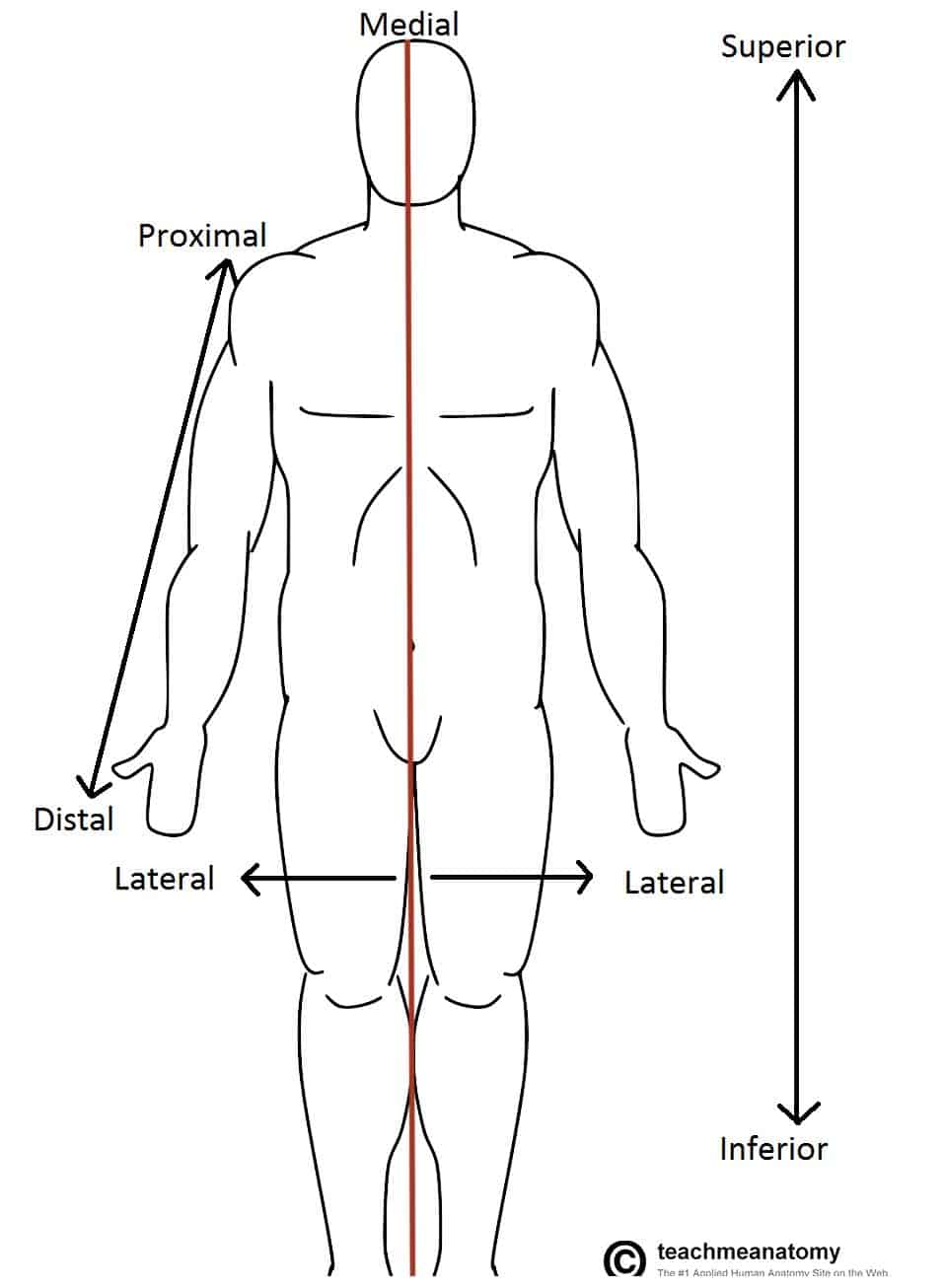The anatomical terms of location are vital to understanding and using anatomy. They help to avoid any ambiguity that can arise when describing the location of structures.
In this article, we shall look at the basic anatomical terms of location, and examples of their use within anatomy.
Note: There are some anatomical terms that are specifically used in embryology. Learn about them here.
Medial and Lateral
Imagine a line in the sagittal plane, splitting the right and left halves evenly. This is the midline. Medial means towards the midline, lateral means away from the midline.
Examples:
- The eye is lateral to the nose.
- The nose is medial to the ears.
- The brachial artery lies medial to the biceps tendon.

Fig 1.0 – Anatomical terms of location labelled on the anatomical position.
Anterior and Posterior
Anterior refers to the ‘front’, and posterior refers to the ‘back’. Putting this in context, the heart is posterior to the sternum because it lies behind it. Equally, the sternum is anterior to the heart because it lies in front of it.
Examples
- Pectoralis major lies anterior to pectoralis minor.
- The triceps are posterior to biceps brachii.
- The patella is located anteriorly in the lower limb.
Superior and Inferior
These terms refer to the vertical axis. Superior means ‘higher’, inferior means ‘lower’. The head is superior to the neck; the umbilicus is inferior to the sternum.
Here we run into a small complication, and limbs are very mobile, and what is superior in one position is inferior in another. Therefore, in addition to the superior and inferior, we need another descriptive pair of terms:
Examples
- The nose is superior to the mouth.
- The lungs are superior to the liver.
- The appendix is (usually) inferior to the transverse colon.
Proximal and Distal
The terms proximal and distal are used in structures that are considered to have a beginning and an end (such as the upper limb, lower limb and blood vessels). They describe the position of a structure with reference to its origin – proximal means closer to its origin, distal means further away.
Examples:
- The wrist joint is distal to the elbow joint.
- The scaphoid lies in the proximal row of carpal bones.
- The knee joint is proximal to the ankle joint.